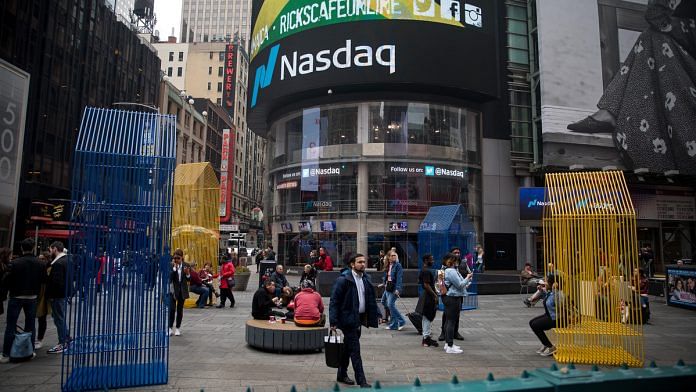To date, the economic damage wrought by the pandemic has been mostly hidden by massive government subsidy. That’s about to change. And so the next few months will reveal the underlying economic impact of Covid-19 across the globe more clearly than we’ve seen so far. My bet: As governments withdraw fiscal support, the economic picture is going to look worse than commonly appreciated.
Getting a sense of what’s about to happen requires that we first be clear about how and why the pandemic has affected the economy: Is it because governments have required people to stay home, or is it because of the virus itself? New research shows that economic losses have come mainly from fear, not government mandate. So eliminating the mandates without ending the fear does very little.
One analysis, by Austan Goolsbee and Chad Syverson of the University of Chicago, is based on cell phone records of customer visits to more than 2 million businesses. The researchers dug into the details to assess how lock-down rules affected activity — for example, by looking across counties in a single commuting area with varying rules. They found that consumer traffic declined by 60 percentage points from the beginning of March to mid-April, and that government lock-down mandates caused only about 7 percentage points of that drop. The key driver, they conclude, was fear. One factor consistent with this hypothesis is that the decline in the number of customer visits is highly correlated with the number of Covid deaths in the local area.
A second group of researchers, led by Raj Chetty of Harvard University, assembled detailed data from private companies. They found that the economic impact in March came disproportionately from high-income households cutting their spending sharply. The researchers noted that “this reduction in spending greatly reduced the revenues of businesses that cater to high-income households in person, notably small businesses in affluent ZIP codes. These businesses laid off most of their low-income employees, leading to a surge in unemployment claims in affluent areas.” Like Goolsbee and Syverson, Chetty’s group concluded that simply removing government lock-down mandates would have only a modest effect on local employment.
No doubt some observers will continue to insist that government rules have been the problem. But those who hold this view increasingly resemble, to quote Keynes’s famous comparison, “Euclidean geometers in a non-Euclidean world who, discovering that in experience straight lines apparently parallel often meet, rebuke the lines for not keeping straight as the only remedy for the unfortunate collisions which are occurring.”
Given that the underlying public health problem is the key driver of reduced economic activity, and that merely removing social distancing requirements won’t restore economic activity, the question arises, might the fear dissipate? Might it go away on its own, or might we get a treatment or a vaccine effective enough to eliminate it? This will be the topic of a forthcoming column, based in part on a new survey of health care leaders that Lazard has conducted.
With no such change for the better in sight, the next three months stand to reveal the underlying economic pain more vividly than the past three months have — because the massive fiscal assistance that governments offered when the pandemic first hit is soon going to fade.
Government programs have varied in their effectiveness: One analysis from the Peterson Institute for International Economics, for example, suggests the French government’s fiscal approach has been substantially more cost-effective than the American one has been. (I serve on the board of the Peterson Institute.) But in almost all countries, governments have acted aggressively. The International Monetary Fund estimates that, in total, governments have devoted $11 trillion to the pandemic fiscal response. Those trillions have substantially cushioned the economic blow so far.
In many countries, however, fiscal support is either already being withdrawn or is about to be. In the U.S., policymakers are debating how to extend expanded unemployment benefits that expire at the end of July and also provide additional assistance to state and local governments — but the likely outcome will be that the government offsets less of the economic impact than previously. The U.K. government, for its part, has announced a new plan to revitalize the economy amounting to almost $40 billion. But as companies there realize that the extent of assistance will shrink, they are proceeding with new layoffs. The story is similar in France and elsewhere, as the initial extraordinary protections are pared back.
The global economy is now caught in a race between efforts of governments and those of the pharmaceutical industry. Can drugs that address the fear factor be created faster than governments pull back on fiscal support? As we watch their progress, the next three or four months may not be pretty. – Bloomberg
Also read: Global GDP could fall 20% over next 80 years due to climate change, economists warn






